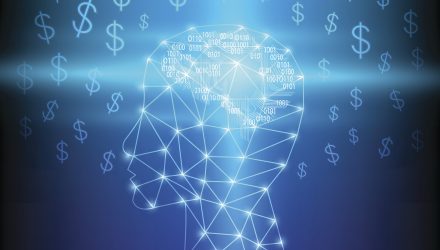Bank customers are becoming more and more demanding. In the age of Google, Apple, Facebook and Amazon, we have become accustomed to personalized offers building on data that we have voluntarily provided. As a result, the first banks have already expanded on the AI system used by Alexa, to produce finance-specific answers for customers who want Alexa to run their investment strategy.
The rise of machine learning algorithms
Behind this development are machine learning algorithms, which are able to model the characteristics of the people concerned and predict their preferred investment behaviour and interests. While these algorithms can learn, the “machine” element does not make them self-sufficient and self-sustaining. They must be fed the right models at the right intervals by a human being, in this case a data scientist.
This is by no means the only use of AI and analytics in banks. One of the most common uses is in managing unstructured data, including emails, news articles, excerpts from the commercial register and recorded telephone conversations. Analysing these data does not necessarily require AI; the first challenge is to be able to apply analytics at all. AI, however, certainly gives the best chance of processing this information intelligently.
Digitalization in banking needs to be performed from end-to-end, encompassing activities in the front-, middle-, and back-office, and underpinned by advanced analytical technologies. Whether you are a business sponsor, data scientist, data manager or IT facilitator, our practitioners have the experience and expertise to help you navigate the analytics path to value. Sign up for our monthly webinars and accelerate your analytics journey.
Smarter banks with AI
AI also has potential to make banks smarter. For example, it could be used to learn how markets behave, through deeper insights into the behaviour of the market participants, enabling better risk assessments. Modelling human behaviour — complex, emotional and influenced by a wide range of inputs — can also help bankers. An AI system that has learned the behaviour of a trader and its effects on performance over time may help to prevent that trader from making unsuccessful decisions based on ‘gut feeling’.
However, it is also conceivable that machines themselves learn by “observing” successful human action over a period of time and then modelling it mathematically. Again, this is likely to need a data scientist to develop the correct mathematical model and manage its adjustment over time, building a long-term partnership of mutual learning and adjustment.
AI also makes the bank smarter than its customers, so that it can offer more useful services. This can happen in several ways. AI can aggregate all information about a customer, so that it ‘knows’ the customer, and can tailor its interactions. It is also conceivable that Apple’s face recognition software could play a role. The bank branch of the future may ‘recognise’ me as I walk in through the door, so that the consultant who greets me already knows about me.
Some are sceptical: One analyst recently commented to me: “What good is knowledge about a customer at the entrance, if the consultant is getting a coffee at the time?” There are, clearly, issues about the efficient operationalisation of the knowledge gained from AI.
AI in credit scoring
In 1970, Irish banks closed for six months because of a strike. There was, relatively quickly, a shortage of cash. But the economy did not grind to a halt; far from it. Instead, people began to exchange cheques and other instruments in the pubs and stores, creating a kind of alternative currency.
